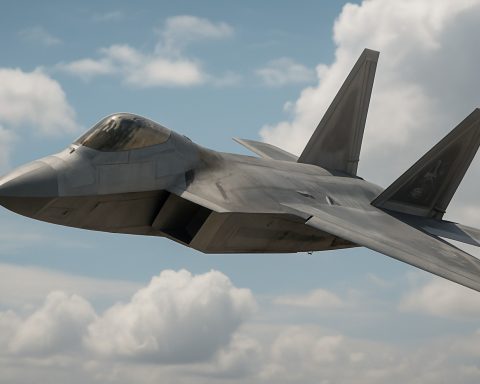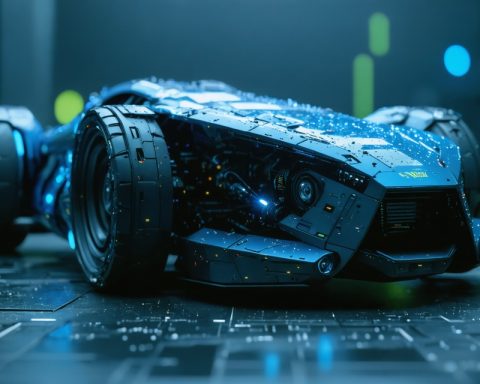- Nvidia dominates the data center computing market, driven by its GPUs and proprietary CUDA software.
- Nvidia’s data center revenue reached $30.8 billion in Q3 FY 2025, significantly outpacing AMD’s $3.5 billion.
- The high switching costs and entrenched infrastructure give Nvidia a substantial competitive advantage.
- AMD shows notable growth and appears attractively priced, but still faces significant hurdles in competing with Nvidia.
- The key strategic question is whether innovation can overcome Nvidia’s strong market position.
The battle for dominance in the data center computing market has become a spectator sport in the tech world. Think of it as David and Goliath, but with a twist—David isn’t just trying to topple Goliath; he’s trying to run a race. With artificial intelligence infrastructure attracting billions in investment, Nvidia stands as the undisputed giant, its GPUs and proprietary CUDA software setting industry standards across the globe.
Nvidia’s financial levers are solidly anchored in their immense data center division, posting revenues that dwarf competitors. As of Q3 fiscal year 2025, Nvidia’s data center revenue towered at $30.8 billion, overshadowing AMD’s $3.5 billion in the same quarter. Despite AMD’s respectable 122% year-over-year growth, Nvidia’s towering stature reflects a formidable moat created by entrenched infrastructure and substantial switching costs.
Picture AI software developers typing away, their fingers dancing on keyboards already mapped to Nvidia’s CUDA—a system they know like the back of their hand. Transitioning to AMD’s setup would be like learning a new language overnight. The sheer inertia of Nvidia’s network makes AMD’s aspiration seem like climbing a tech Everest.
Yet, when dust settles on the trading floors, can AMD pull out a surprise from under its sleeve? The stock market provides a glimmer—AMD appears more attractively priced when forecasted through forward P/E lenses. But until AMD effectively bridges the vast expense of switching costs and matches Nvidia’s rapid growth, the latter retains its stronghold.
The key takeaway: In the cutthroat world of AI investing, going with the juggernaut often secures a more promising portfolio position. As Nvidia sprints ahead, leaving challengers to eat its silicon dust, the question on every investor’s mind remains: can innovation trump financial behemoths, or will Goliath continue to storm the summit, unchallenged?
The Great GPU Showdown: Nvidia vs AMD, Who Will Rule the Data Center Future?
How-To Steps & Life Hacks: Transitioning from Nvidia to AMD
1. Assess Application Requirements: Evaluate if the specific application needs can be met by AMD GPUs. Consider performance benchmarks and compatibility with software libraries.
2. Prepare a Test Environment: Set up a smaller scale environment with AMD GPUs to run performance tests and understand any compatibility issues.
3. Utilize Open-Source Frameworks: Leverage frameworks like ROCm (Radeon Open Compute) which is designed to optimize AMD GPUs for high-performance computing.
4. Benchmark and Optimize: Run parallel benchmarking between existing Nvidia setups and new AMD implementations to compare and contrast performance metrics.
5. Conduct Training and Education: Introduce training sessions for developers to get accustomed to the AMD ecosystem and its tools.
Real-World Use Cases
– Large Language Model Training: Companies using AI models like GPT can experiment with AMD’s GPUs for cost-effective training.
– Cloud Service Providers: Firms like Google Cloud or Microsoft Azure could diversify their hardware options to include AMD solutions for competitive pricing.
– Edge AI Applications: AMD GPUs can potentially reduce costs for edge computing applications, especially in power-sensitive environments.
Market Forecasts & Industry Trends
– Nvidia’s Dominance: Continued growth anticipated, but with caution as AMD and other challengers develop more competitive solutions.
– Rising Competition: Expect increased investments in training software developers for AMD’s ecosystem, potentially leading to a modest market share increase.
– AI Democratization: As smaller companies adopt AMD for cost savings, look for a more distributed AI capability landscape by 2026.
Reviews & Comparisons
In head-to-head comparisons, Nvidia’s new series often wins on sheer performance. AMD, however, provides better price-to-performance ratio in mid-range segments. Many experts, like those from Tom’s Hardware, highlight AMD’s potential in budget-conscious scenarios.
Controversies & Limitations
– Proprietary Ecosystems: Discussion centers around Nvidia’s closed system limiting innovation versus AMD’s open architecture promoting it.
– Resource Drain: Training staff for AMD systems poses a significant hurdle that only companies with ample resources can surmount.
Security & Sustainability
– Sustainability: AMD often markets itself on efficiency, claiming lower power usage ratios. It can be an attractive choice for environmentally focused businesses.
– Security: Nvidia’s established infrastructure may provide more robust security features, but AMD’s transparency offers potential for quicker vulnerability disclosures and fixes.
Pros & Cons Overview
Pros of Nvidia:
– Dominant performance
– Extensive developer resources and ecosystem
– Strong brand reputation and support
Cons of Nvidia:
– High cost
– Proprietary ecosystem hinders integration with other hardware
Pros of AMD:
– Lower cost
– Open-source software support
– Increased flexibility and customization options
Cons of AMD:
– Lacking wider ecosystem support
– Steeper learning curve for developers familiar with Nvidia
Actionable Recommendations
– For Businesses: Start experimenting with AMD in less critical environments to gradually build expertise.
– For Investors: Keep a close eye on AMD’s advancements and Nvidia’s responses, as changes in technology uptake could shift market dynamics.
For further insights and comparisons on tech advancements and AI trends, visit Forbes for more articles and expert opinions.



















